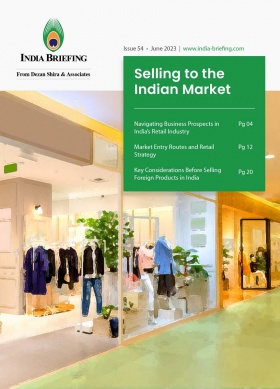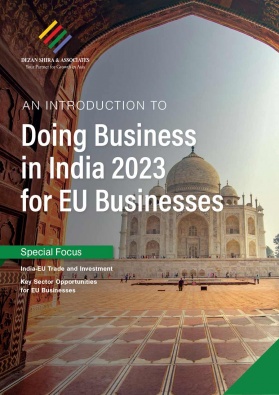Key Outcomes of the 2023 G20 Summit Held in India
The 18th G20 Summit of 2023 recently concluded in New Delhi, India, marking the first-ever G20 summit hosted by the country. The summit’s theme, “Vasudhaiva Kutumbakam” or “One Earth, One Family, One Future” is rooted in ancient Sanskrit texts and the goal of sustainable development.
India was successfully able to achieve consensus around the New Delhi Declaration early on in the G20 Summit, which saw a dilution in the position taken by the U.S. and EU on Russia, besides focus on UN Sustainable Development Goals, climate action and green development initiatives, multilateral financing, digital public infrastructure, artificial intelligence (AI), and international taxation, among others.
We discuss the key outcomes of the 2023 G20 Summit below.
Key outcomes of the G20 Summit 2023
Prime Minister Narendra Modi’s diplomatic coup: PM Modi views this summit as India’s diplomatic milestone, with its G20 presidency serving as a platform to amplify the Global South’s concerns. In a personal capacity, the G20 Summit’s outcomes are important for the Indian leader as he faces general elections next year.
At the Summit, India was able to leverage its economic significance to garner support from all G20 member nations for a Leaders’ Declaration recognizing the conflict in Ukraine without specifying any aggressor. Modi, who chaired the Summit, also advocated for reforming global institutions like the United Nations Security Council (UNSC) to align with the changing world dynamics, which received backing from the United States.
The timing of the G20 Summit was also opportune, following India’s successful moon landing under the Chandrayaan-3 program.
G20 New Delhi Declaration: All 83 paragraphs of the 2023 G20 New Delhi Leaders’ Declaration were unanimously approved, achieving a remarkable 100 percent consensus, even with China and Russia in agreement. Notably, this declaration stood out by containing no footnotes or Chair’s Summary, marking a historic moment.
Within these 83 paragraphs, multiple agreements pertaining to the Finance Track were embedded. Furthermore, it featured 8 paragraphs addressing the conflict in Ukraine and its subsequent economic implications. Finance Minister Nirmala Sitharaman highlighted the achievements of the Indian G-20 Presidency, emphasizing a concrete strategy for strengthening multilateral development banks, a clear path for regulating cryptocurrencies, and the deployment of digital public infrastructure to enhance financial inclusion. She also underscored the importance of a faster debt relief plan for vulnerable nations.
Regarding climate change, the declaration stressed the urgency of mobilizing “US$5.8-5.9 trillion in the pre-2030 period for developing countries” and “US$4 trillion per year for clean energy technologies by 2030” to attain net-zero emissions by 2050. It called for a substantial increase in climate funding, transitioning from billions to trillions of dollars.
African Union accepted as part of the G20: Prior to this, the only African member of the G20 was South Africa. At the Delhi Summit of the G20, the African Union, which represents the 55 countries in the African continent, was given full membership, like how the EU is represented.
India has successfully positioned itself as a champion for developing and underdeveloped nations and seeks to align this with its ambitions for a permanent seat on the UNSC. New Delhi is actively seeking support from the African continent, which holds 55 crucial votes, in pursuit of this goal.
India also invited Nigeria, Egypt, and Mauritius as part of the ‘Guest Countries’ at the G20 summit.
Global leadership participating at the Delhi Summit of the G20: Azali Assoumani, the President of the Union of Comoros and Chairperson of the African Union, joined the gathering of leaders at the summit. Notable attendees included German Chancellor Olaf Scholz, French President Emmanuel Macron, British Prime Minister Rishi Sunak, Turkish President Recep Tayyip Erdoğan, Canadian Prime Minister Justin Trudeau, Italian Prime Minister Giorgia Meloni, South Korean President Yoon Suk Yeol, and Brazilian President Luiz Inácio Lula da Silva.
Chinese President Xi Jinping and Russian President Vladimir Putin were conspicuously absent from the summit. Instead, China was represented by Premier Li Qiang, while Russia sent its Foreign Minister Sergey Lavrov.
India – Middle East – Europe Economic Corridor (IMEC): During the G20 Summit in New Delhi, a Memorandum of Understanding (MoU) was signed among the governments of India, the U.S., Saudi Arabia, the European Union, the UAE, France, Germany, and Italy to establish the India – Middle East – Europe Economic Corridor. IMEC is envisioned as a network of transportation routes encompassing railways and sea lanes. Its primary objective is to promote economic development by fostering integration between Asia, the Arabian Gulf, and Europe.
While specific details are yet to be outlined, this project falls under the umbrella of the Partnership for Global Infrastructure Investment (PGII), an initiative led by Western nations to support infrastructure projects worldwide. The PGII aims to secure funding for critical infrastructure development, including roads, ports, bridges, and communication systems, with the overarching goal of enhancing global trade and cooperation.
While no leader explicitly mentioned China, it’s clear that the IMEC corridor hopes to become a viable alternative to China’s Belt and Road Initiative (BRI), which has steadily established global connectivity linkages with the Chinese market through extensive shipping, rail, and road networks, since its conception 10 years ago.
Climate action: Leaders at the G20 Summit did not reach a consensus on the phase-out of fossil fuels, despite a United Nations report categorizing this phase-out as “indispensable” for achieving net-zero emissions. The G20 nations collectively contribute to approximately 80 percent of global emissions. The inability to agree on this crucial issue casts a shadow over upcoming climate discussions set to commence in November in the oil-rich UAE.
Nevertheless, the G20 did endorse a goal to triple global renewable energy capacity and emphasized the necessity for emissions to peak before 2025. Additionally, the Declaration acknowledged that limiting global warming to 1.5 degrees Celsius (2.7 degrees Fahrenheit) necessitates a 43 percent reduction in greenhouse gases by 2030 compared to 2019 levels.
The G20 New Delhi Leaders’ Declaration also featured commitments to mainstream Lifestyle for Environment (LiFE), implement sustainable energy transitions, provide sustainable finance, reaffirm the pursuit of Sustainable Development Goals (SDGs), address plastic pollution, preserve the ocean-based economy, and more. Additionally, the summit witnessed the launch of the Global Biofuel Alliance (GBA), a new organization aimed at promoting the development and adoption of sustainable biofuels, along with the establishment of relevant standards and certification.
Bilateral meetings on the sidelines
During the 2023 New Delhi G20 Summit, Prime Minister Modi engaged in a series of bilateral meetings with world leaders. He symbolically handed over the G20 presidential gavel to Brazilian President Lula, expressing confidence in India’s successor to promote global unity and prosperity. Modi also addressed issues of mutual interest with various leaders.
In one notable meeting, Modi raised India’s deep concerns regarding extremist elements in Canada supporting secessionism, inciting violence against Indian diplomats, and threatening the Indian community there. President Biden highlighted the partnership between India and the U.S., rooted in Mahatma Gandhi’s principle of trusteeship, shared between the two nations.
Russia praised the G20 Summit under India’s presidency as a “breakthrough,” highlighting its outcomes as a roadmap for addressing global challenges and showcasing the strength and importance of the Global South. PM Modi also discussed the enhancement of trade and infrastructure relations with Turkish President Erdogan.
Several world leaders at the G20 Summit congratulated Modi on the success of Chandrayaan-3. Japanese PM Kishida commended PM Modi for the “Mission LiFE” concept. European Commission President Ursula von der Leyen advocated for the creation of a new global framework for addressing artificial intelligence risks, emphasizing the importance of safeguarding society and encouraging responsible AI investments.
Furthermore, G20 leaders, including U.S. President Joe Biden, UK Prime Minister Rishi Sunak, and UN Secretary-General Antonio Guterres, paid their respects to Mahatma Gandhi at his memorial, Rajghat.
What is the G20 and how does it work
The G20 originated in 1999 in response to the Asian financial crisis of 1997-98, initially serving as an informal platform for finance ministers and central bank governors from both developed and developing economies. In 2008, following the global financial crisis, the G20 expanded to include the heads of state of member countries. The G20 Presidency rotates annually under a troika system, involving the current, previous, and next host countries. In 2022, India took over the G20 Presidency from Indonesia, the preceding member of the troika. The presidency has now been passed to Brazil, the next troika country.
How the G20 works
The G20 operates through three main tracks: the Finance Track, the Sherpa Track, and Engagement Groups.
Finance Track: Led by finance ministers and central bank governors, this track convenes approximately four times a year. It addresses fiscal and monetary policy issues, including the global economy, infrastructure, financial regulation, financial inclusion, international financial architecture, and international taxation. Key working groups within this track cover topics, such as the Framework, International Financial Architecture, Infrastructure, Sustainable Finance, Financial Inclusion, Finance and Health, International Taxation, and Financial Sector Matters.
Sherpa Track: Established in 2008 when the G20 became a leaders’ summit, the Sherpa Track is comprised of representatives of heads of state. It focuses on socioeconomic concerns like agriculture, anti-corruption, climate change, the digital economy, education, employment, energy, environment, health, tourism, trade, and investment. Each representative in this track is referred to as a Sherpa, and there are 13 working groups covering areas, such as Agriculture, Anti-corruption, Culture, Development, Digital Economy, Disaster Risk Reduction, Education, Employment, Energy Transitions, Environment and Climate Sustainability, Health, Tourism, and Trade and Investment.
Engagement Groups: This unofficial track includes non-government participants and engagement groups that provide recommendations contributing to policy-making. The Engagement Groups consist of Business20, Civil20, Labour20, Parliament20, Science20, SAI20, Startup20, Think20, Urban20, Women20, and Youth20.
With inputs from Melissa Cyrill.
About Us
India Briefing is produced by Dezan Shira & Associates. The firm assists foreign investors throughout Asia from offices across the world, including in Delhi and Mumbai. Readers may write to india@dezshira.com for more support on doing business in India.
We also maintain offices or have alliance partners assisting foreign investors in Indonesia, Singapore, Vietnam, Philippines, Malaysia, Thailand, Italy, Germany, and the United States, in addition to practices in Bangladesh and Russia.
- Previous Article India Expands Industrial Cooperation with the Eurasian Economic Union
- Next Article Achievements of the G20 Finance Track 2023 Under India’s Presidency: Global Economic Stability, Crypto Regulation









